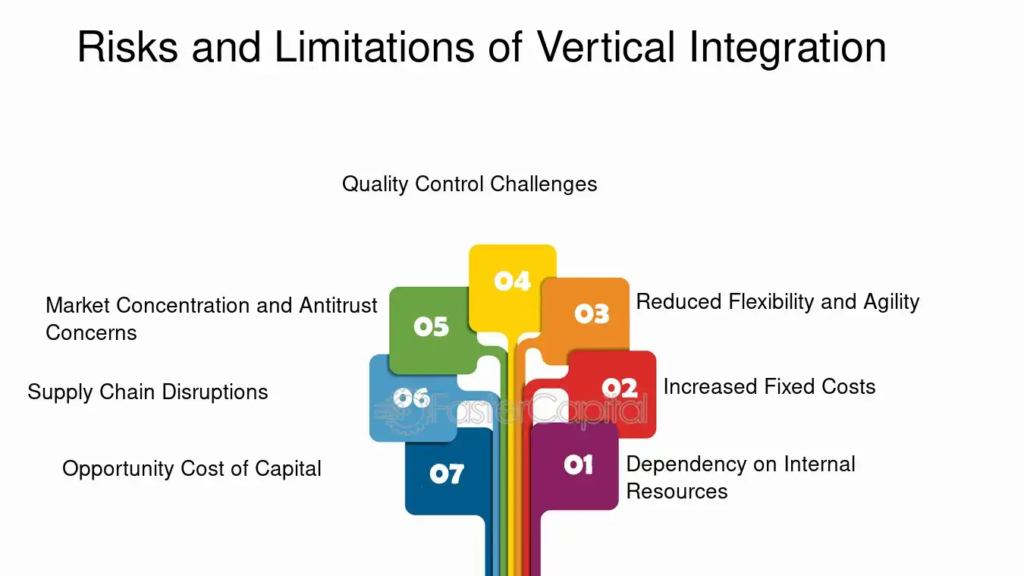
Understanding the Concept of ZOSQK
In today’s digital age, we are surrounded by acronyms and code-like terms that hold immense potential and hidden meanings. One such mysterious keyword that has recently sparked curiosity among tech enthusiasts and professionals is “ZOSQK.” While the term itself may appear cryptic, its applications, implications, and relevance are becoming increasingly significant in the fields of technology, cybersecurity, and digital communications. As digital transformations continue to shape industries, understanding and exploring terms like ZOSK becomes vital. This article aims to decode ZOK and provide a comprehensive exploration of its meaning, usage, and relevance in today’s interconnected world.
The Origin and Etymology of ZOSQK
The origin of ZOSK is as fascinating as the term itself. While there is no universally agreed-upon definition, several theories suggest that ZOSK is an acronym or a designated code used in specialized sectors like data security, encrypted systems, or proprietary software environments. Some tech forums speculate it as a placeholder term used in simulation models, while others associate it with AI-generated strings designed for unique identifiers. Its enigmatic nature makes it a subject of intrigue, allowing researchers and developers to assign flexible meanings depending on its use case. This fluidity in interpretation gives ZOSK a unique standing in the digital lexicon.
ZOSQK in Cybersecurity Frameworks
One of the most plausible and widely accepted applications of ZOSK lies in the realm of cybersecurity. In an era where data breaches and ransomware attacks are becoming more frequent, ZOSK can be conceptualized as a unique protocol or module embedded within advanced security systems.

It may represent a specific algorithm or firewall layer that reinforces data encryption, ensuring unauthorized access is prevented. Moreover, by integrating ZOSQK-like identifiers, organizations can enhance system integrity checks, verifying that their systems remain unaltered and tamper-proof. Its presence, even as a hypothetical concept, adds to the ever-expanding arsenal of digital defense mechanisms.
Potential Use in Artificial Intelligence Systems
Artificial Intelligence (AI) systems thrive on unique identifiers and algorithmic complexity. ZOQK could very well be an AI-generated term developed for use in training neural networks or distinguishing variable patterns in machine learning models. AI applications demand vast arrays of synthetic data inputs, and terms like ZOQK can serve as randomized tags, ensuring there is no data redundancy or bias. In language models and deep learning architectures, ZSQK might act as a test parameter, enabling systems to refine responses and generate more accurate predictions. The adaptability of such identifiers in AI workflows ensures they remain a valuable asset in research and deployment.
ZOSQK and Digital Authentication Protocols
Authentication is a cornerstone of digital interaction. From logging into email accounts to accessing confidential business data, secure authentication is non-negotiable. ZOSK can be interpreted as a unique token or part of a hashed string used in two-factor authentication (2FA) or multi-factor authentication (MFA) systems. Such identifiers add a layer of complexity, ensuring that even if a password is compromised, unauthorized access remains difficult. Furthermore, ZSQK could be employed in blockchain environments to tag specific transactions, improving traceability and verification processes across distributed ledgers.
ZOSQK in Coding and Development Environments
For software developers, the presence of unique tags, variable names, and placeholders is essential for creating clean, functional code. ZSQK might be utilized as a dummy variable or test string in coding environments during the initial phases of software development. These terms help programmers build structures, test user input validations, and simulate environment-specific scenarios. Additionally, in collaborative development platforms like GitHub, ZOSK could act as a signature prefix for experimental branches or debug versions. This creative freedom allows developers to innovate without risking core application functionalities.
The Role of ZOSQK in Digital Forensics
Digital forensics involves tracing the digital footprints left behind during a cyber incident. Here, identifiers like ZOSQK could be instrumental. Forensic investigators can use such terms as search tokens within metadata, system logs, or network trails to isolate suspicious activities or detect anomalies. If OSQK is embedded as a marker within system frameworks, it provides clarity and streamlines the forensic process. It becomes easier to pinpoint breaches, understand intrusion vectors, and fortify systems against future threats. Hence, even as a hypothetical entity, ZOSQ finds relevance in digital investigation processes.
Integration with IoT and Smart Systems
The Internet of Things (IoT) has revolutionized our interaction with the physical world by interconnecting devices to the internet. ZOQK could serve as a communication protocol, unique identifier, or control signal within smart systems, helping regulate operations of smart thermostats, surveillance systems, or connected vehicles. IoT networks are vulnerable to cyber threats, and incorporating identifiers like ZSQK enhances security by ensuring each device transmits data through verified, trackable channels. It supports rel-time monitoring and reduces system errors caused by miscommunication between smart components.
ZOSQK as a Branding or Conceptual Identity
Beyond its technical implications, ZOSQK can also evolve into a branding term or conceptual identity for a company, product, or digital service. Tech startups often seek distinctive names that resonate with innovation and futuristic potential. ZOSK, with its sleek and tech-savvy sound, fits this profile perfectly. It can be the name of a cybersecurity suite, an AI platform, or even a cutting-edge mobile app. Branding strategies rely heavily on uniqueness and memorability, and ZOSQK offers both, making it an ideal candidate for intellectual property development.
Symbolism and Cognitive Recognition of ZOSQK
Cognitively, humans are drawn to patterns and structured anomalies. ZOSQK, with its blend of consonants and a single vowel, presents an unusual yet memorable string. This uniqueness plays a role in cognitive psychology and marketing, where the goal is to retain user attention. When utilized in advertising or digital interfaces, ZOSQK has the potential to stand out, leaving a lasting impression on viewers. This makes it valuable not just as a technical tool, but also as a psychologically effective identifier in user-centric design.
ZOSQK in Quantum Computing Possibilities
Quantum computing is still in its nascent stages, but it promises exponential computational power. ZOSQK could theoretically be used as a quantum bit identifier or code marker in quantum simulations. Since quantum algorithms depend on unique inputs to process probabilities and outcomes, having an identifier like ZOSQK helps in tracking iterations and maintaining system coherency. This possibility places ZOSQK at the cutting edge of next-generation computing innovations, opening up possibilities we are only beginning to imagine.
Challenges and Limitations of ZOSQK Integration
Despite its potential, integrating ZOSQK-like terms into mainstream systems comes with challenges. Lack of standardization can lead to miscommunication or conflicting protocols. Additionally, in systems requiring high transparency and documentation, vague identifiers like ZOSQK may create confusion unless properly defined.

Therefore, implementing ZOSQK would require structured documentation, consistent usage guidelines, and widespread team adoption. Without this, the benefits of unique identifiers may be overshadowed by practical inefficiencies and security loopholes.
Legal and Ethical Considerations
Using cryptic identifiers like ZOSQK in sensitive or regulated sectors must comply with data governance policies. Legal frameworks such as GDPR, HIPAA, or CCPA require clarity in how data is labeled, processed, and stored. If ZOSQK is used to anonymize user data, developers must ensure it does not violate any transparency or user consent regulations. Additionally, ethical use of such terms in AI systems must be scrutinized to prevent misuse or discriminatory outcomes driven by biased algorithms.
Community Adoption and Developer Reception
The broader tech community often drives the adoption of emerging terms. For ZOSQK to gain traction, it must be included in open-source projects, technical forums, and collaborative documentation. Platforms like Stack Overflow, GitHub, and Reddit serve as breeding grounds for new terminology and best practices. If ZOSQK is embraced in these spaces, it can transition from an obscure term to an industry standard. Developer communities can shape its evolution, defining what ZOSQK should mean and how it should be implemented.
Educational Applications of ZOSQK
In educational institutions, teaching complex concepts requires engaging tools. ZOSQK can be used as a case study, teaching students about the value of unique identifiers, secure coding practices, and algorithm design. Educators can craft programming exercises using ZOSQK as a focal point, challenging students to think creatively about digital problem-solving. This not only strengthens technical skills but also encourages innovation and strategic thinking among future developers.
Future Trends and Evolving Significance of ZOSQK
As digital ecosystems become more complex and interconnected, terms like ZOSQK will play a larger role. Whether as a functional identifier, brand name, or educational tool, its adaptability makes it future-proof. Emerging technologies such as edge computing, neural interfaces, and autonomous systems may eventually incorporate ZOSQK-like constructs for improved efficiency and system management. The future holds vast potential for this cryptic yet compelling term.
Conclusion: Embracing the Potential of ZOSQK
ZOSQK, though currently undefined in mainstream databases, symbolizes the evolving nature of digital language and its limitless applications. From cybersecurity protocols and AI identifiers to branding elements and educational tools, its uses are as vast as the digital realm itself. By embracing such terms with curiosity and structure, we unlock the next level of technological innovation and understanding. Whether you’re a developer, researcher, student, or entrepreneur, ZOSQK offers an exciting lens through which to explore the digital future.
Key Takeaways
- ZOSQK may be used as a unique identifier in AI, cybersecurity, and software development.
- Its potential applications extend to digital forensics, quantum computing, and IoT systems.
- The lack of definition offers flexibility, but requires clear guidelines for practical use.
- It has branding potential due to its uniqueness and cognitive recognition.
- Legal and ethical frameworks must guide its application in sensitive sectors.
FAQs
Q1. Is ZOSQK an acronym or a randomly generated term?
While it may appear random, ZOSQK is often used as a placeholder or identifier. Its interpretation depends on the context in which it’s applied.
Q2. Can ZOSQK be implemented in real-world applications?
Yes, ZOSQK can be utilized in software development, cybersecurity systems, and even branding strategies, provided it’s defined and documented appropriately.
Q3. Is ZOSQK relevant for students and educators?
Absolutely. ZOSQK can be a powerful educational tool to teach about identifiers, digital systems, and conceptual innovation in technology-driven curriculums.
Also Read This: DefStartupOrg: Empowering Defense Startups Globally




